
So many people take yoga classes for years, but they never learn how to practice yoga at home. That’s a shame because some of the most fundamental benefits of yoga come from cultivating a personal practice. Even beginners should practice yoga at home. it doesn’t have to be a long practice, just 10 minutes a day can do wonders. I’ve been a certified yoga instructor for almost 20 years, and it is my pleasure to teach you how to practice yoga in your home, on the beach or anywhere you happen to be.
Yoga was never meant to an exercise class along the lines of kick-boxing and step aerobics. Traditionally, a guru directly guided a disciple’s personal yoga practice. The disciple benefited from two teachers: the guru and yoga itself. In the modern Western world this doesn’t usually occur due to obvious impracticalities. The great thing is that more people than ever before are experiencing yoga in their everyday lives. The unfortunate consequence is that an essential element is lost. Even the very best yoga teacher at the very best yoga studio has built-in limitations. The nature of a class is to draw one’s attention outward, towards the teacher. Yet the essence of yoga is to draw one’s attention inward, towards the heart center. To experience the complete power of yoga, both physically and spiritually, at some point one must face your mat alone.
Personal practice is not something reserved for only advanced students. In fact, I doubt anyone ever becomes an advanced student without cultivating a personal practice. I always strongly encourage my students to begin a personal practice as soon as they take their first class, even if it’s only for ten minutes a day. This gives you access to your most important teacher: the practice itself. Modifying your experience of yoga from class participant to yogi with a personal practice may be one of the most transformative events of your life.
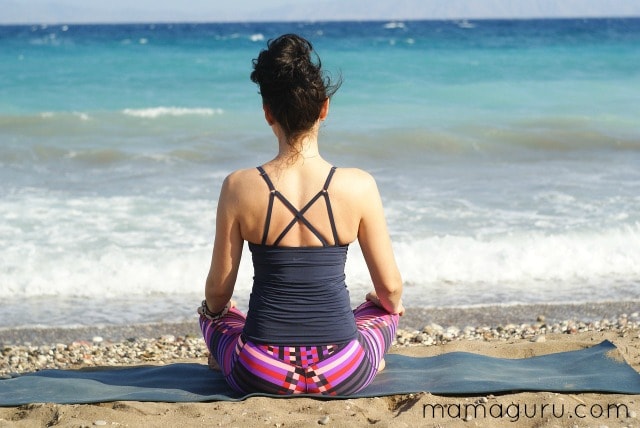
How to Begin a Personal Yoga Practice at Home
First, write a list of all the asanas (postures) that you know. It is OK if you know some names in English, some in Sanskrit and can’t quite remember the names of a few. Just choose a word or two that you understand.
Divide your asanas into the following categories:
- Pranayama or Breathing Exercises
- Sun Salutations
- Standing Poses
- Seated Poses
- Inverted Poses (This means your heart is above your head.)
- Restorative and Meditative Poses
Look over your list. If you have a very long list and a small window of time for your practice, consider dividing your postures into two different sessions. If you do this, divide them thematically, perhaps one day will focus on strength and another on balance. For a complete practice try to include postures from every category everyday.
Write down your practice neatly and with large print. This way you can glance at it without stopping your practice to squint. This paper is just a guide and it won’t take long before you discard it, but in the beginning a road map can be a great way to keep you focused and to prevent you from forgetting essential elements.
Decide how long to hold each asana. If you don’t know, I recommend five full breaths. If you happen to feel really good in a particular asana, stay in it longer. If you meet challenge or resistance in an asana, commit to the five breaths as a way of cultivating discipline. Although it can be uncomfortable, postures that you are resisting probably have something important to teach yo. I can’t tell you how many times I have dreaded a particular asana, only to eventually watch it transform into my favorite asana once I opened up and understood it.
Create a sacred place for your practice. It needn’t be elaborate. It can be in the corner of your bedroom, but make sure it is clean and you aren’t likely to be disturbed. A vase of flowers or a spiritual icon can transform your space in a small, yet meaningful way. I like to light a candle in front of my mat as a small ritual that signals the entrance into a sacred time and place. I recommend not using music, so you can connect more deeply with your breath’s natural rhythm.

Here is a pattern you can follow for your practice. Feel free to adjust it to your needs and allow it to evolve with you :
Begin with Intention
This can be as simple as committing your mind to fully concentrate on today’s practice or it may be more devotional with chanting and a Sanskrit prayer.
Connect with Breath
The word yoga means union. This union occurs on many levels of practice, from the sublime union of the Self and Divine Consciousness, to the basic union between body and mind. At a fundamental level asana practice is concerned with the union between breath and movement. Sometimes this principle gets lost in group practice, because the teacher must give so many instructions so beginners can practice safely and more advanced students can progress. The beauty of personal practice is that you can and should connect every single movement to a breath.
At the beginning of your practice, take a few moments to develop a strong, deep even breath. Strive to maintain this connection throughout the practice. If you ever realize you’ve lost your connection, stop and reestablish it before continuing.
Sun Salutations
The first moving stage of practice begins with Sun Salutations. Traditionally yoga is practiced early in the morning facing East. It is absolutely lovely to greet the sunrise in this beautiful manner. Even if you are facing south very late at night that can be a nice image to hold.
There are many, many variations of Sun Salutations. The above video is just one example. The important thing for you to remember is to connect each movement with a breath. In general, movements that bring your body upward should have an inhalation and movements that are downward require an exhalation. Pay very close attention and strive to keep an even breath. This is challenging as heat rises in your body. Keep your breath strong and even and you will feel amazing results. This is one area where you can really appreciate the beauty of home practice as opposed to a class experience. You are follow your own breath without any sense of choreography. Try to do at least five complete Sun Salutations.
Standing Postures

Standing postures come next. They continue to build heat in your body and also increase your strength and balance. Maintain a strong connection with your breath, especially during the transitions. Approach all of these poses like a warrior: full of power, strength, focus and determination.
Seated Postures
The heat you have now built up through Sun Salutations and Standing postures helps your body enter the seated postures safely and with greater flexibility. Keep your breath strong, but make sure your belly tucks in during forward folds and twists. Always try to ind release in your exhalations. After three breaths, see if you can go deeper. Ask yourself, What can I let go of? Some muscles pull your body into a posture, but others need to relax and in order to allow the posture to deepen. Enjoy this exploration. It is one of the most rewarding aspects of practice.
Inversions

These postures come at the end of practice, because they are very powerful. Inversions put your heart above your head (How poetic!) reversing the flow of gravity. This changes your blood circulation, eases joint stress, brings fresh perspective and tones the endocrine system. Although you may be tired, focus your energy to remain strong and maintain a strong breath connection. Strive to hold these postures longer if you can, for ten breaths instead of five.
Closing Practice
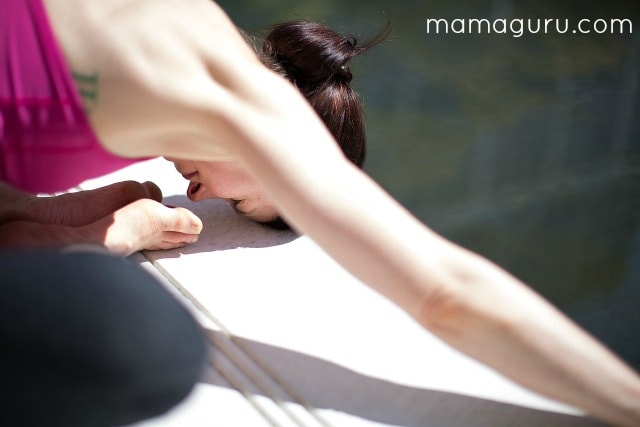
Try not to simply roll up your mat when you’re done. Even if you are interrupted, close your practice with a moment of gratitude.
Ideally, you will close your practice with a beautiful Savasana, or corpse pose or deep relaxation. Lay down with your eyes closed, legs separated by a foot or two, palms open and facing upward. Scan your body from top to bottom or bottom to top, relaxing each individual body part. Let go of your breath and let it dissolve into its own natural rhythm. Some people experience a deep sinking feeling of relaxation, while others seem to float. Relish this time and allow yourself to observe the energy sensations in and around your body.
After a few moments of bliss, your awareness will return to your body. Take a few deep breaths. Wiggle your fingers and toes and flutter your eyelids open. Roll onto your side in a fetal position to take a few transitional breaths. Notice how we move from the position of a corpse to that of a fetus. In each practice, a part of us is reborn.
Sit lotus position (or half lotus, or cross-legged). Place your hands in a meditative gesture. Return to your connected breath. Acknowledge your practice and how it has changed you. Make an intention to take something away from today’s practice and into your life. Some people like to chant a mantra or meditate at this time. If you have the desire and time, this is ideal because both body and mind have been calmed by yoga practice. You are open. You are receptive.
When you are ready to leave, place your palms together at your heart center and bow in gratitude saying, “Namaste.”
What You Need to Start a Home Yoga Practice
FYI this section contains affiliate links, meaning at no cost to you, I earn a small commission if your make a purchase.
Thee isn’t much that that you need to begin practicing yoga at home. In fact, you could just start with your bare feet on a wood floor, but most of us do prefer at least a really great yoga mat. Here are a few things I use and love that can help get you excited and motivated to begin your home yoga practice.
I love this beautiful yoga mat from Gaiam. It’s the one I use everyday. There are so many gorgeous colors and prints to choose from.
Yoga blocks can help you maintain proper alignment while you work on increasing your flexibility. I love these eco-friendly yoga blocks from Wacces. they come in lots of different colors.
Yoga straps are invaluable for creating tension in a stretch before you are flexible enough to grasp your hands in a pose. They’re useful for many people, but essential for inflexible beginners. Here’s a great yoga strap from FitLifestyleCo.
Blankets can be used to cover you in deep relaxation, but the can also be used as a cushion and support in many other poses. They are excellent for restorative yoga. Here’s a traditional Mexican blanket just like the kind most studios use.
I find candles to be so lovely for setting the mood. These are the scrumptious candles from Blue Lotus that I love and a beautiful lotus candle holder with the Om symbol to help you create a sacred place for your practice.
Note: This article is written for people who have at least an introductory knowledge of yoga. If you have never practiced, some terminology may be confusing. I encourage you to take a few classes at your local yoga studio, gym or community center. Alternatively, you can begin at home with a video. I highly recommend Yoga for Beginners and Beyond. It’s an excellent, safe introduction to yoga.
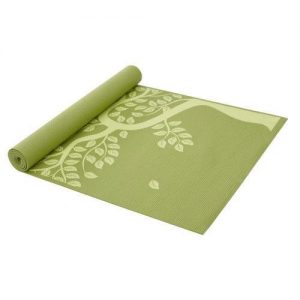
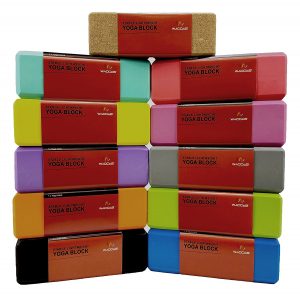
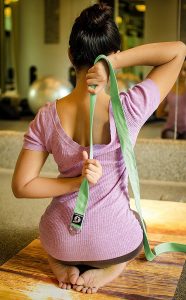
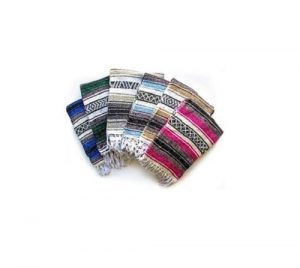

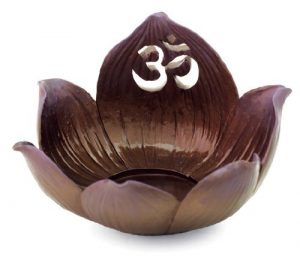
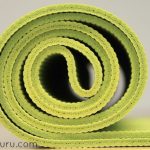




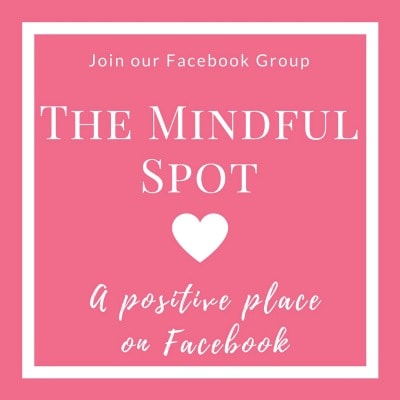
I’m so glad you found this post, Sarah-Jayne. Getting the breathing down will really help your flow.
That’s a really common struggle Ivanna. I get up before my family to do yoga, or occasionally I’ll do it when my kids are already in bed. It’s also really helpful to have a set place to practice. I have a few candles that I always light. Besides being beautiful, they signal to me the sacredness of practice.
You’re welcome, Julie!
This post is so awesome with so many great tips! Thanks for sharing all your wisdom on this!!
This is great! I’d really like to start incorporating yoga at home (since getting to a studio is pretty difficult).
I started yoga classes a few times (also when I was pregnant) but haven´t found something i liked yet… However, i did do some online yoga classes at home and i liked that much better. Thanks for the tips!
I really do need to be better about practicing yoga at home! These are some great tips!!! I have a mat and many of the things listed, but I need to find the discipline to practice on my own.
One of my goals this year is to find my way back to the yoga mat and ideally I need to do at home, so this is awesome!
Loved this guide! I’ve always wanted to try yoga so I may just have to favourite this and try it at home 😛
This is terrific! I have always wanted to get into Yoga but felt intimidated to go to a class and really with 5 kids and a dog, who has time for that haha This post really inspires me to give yoga a try at home.
This is great and so helpful! Thank you for sharing your tips!
I just started my yoga practice not to long ago and I purely do it at home. I read a ton of books and follow youtube guides. But thank you for something to add to my repertoire!
Oh my gosh … this post is totally speaking to me! Thanks so much for sharing all of these tips!
I love yoga, and I agree with your reasoning to do more yoga at home. My barrier is that going to a studio or a class helps me prepare my mind and set aside the time. When I stay home, it’s easy for me to crowd out that “yoga time” with other things. How do you designate time for yoga and help your mind to set that time aside.
I love YOGA but haven’t gone since my second baby has been born! Thanks for sharing this and motivating me.
Saving this post! Thank you. I really want to get going in Yoga!
I love how in depth you go in this article, particularly the demonstrations and the additives to set the tone of the room. You’re an excellent writer, and motivator! Thanks for sharing!
http://www.onceortwiceblog.com
What an informative post! It’s probably a silly thing to take away from all of this, but your explanation about generally breathing in when going up and out when going down was an aha-moment for me! I’ve always struggled with that when the teacher says ‘breath out now’ I wasn’t and couldn’t get the right rhythm and then started to focus way too much on not doing it right. So thanks!
Yoga has exploded and has become one of the most popular classes at the gym and other places. Like this idea that you can do yoga at home and your information is detailed.
That’s a great attitude, Kari. It’s another benefit to home practice, because getting to a studio isn’t always possible for time or financial reasons.
Doing yoga with kids is fun! I like to do the animal shapes with them and have them make animal noises.
That’s wonderful, Erica!
Absolutely, Melissa. I’m a yoga instructor and I would never knock going to class, but an essential part of yoga is your personal practice.
Andi, I can’t tell you how happy that makes me to hear. Please reach out if you have any questions. Namaste.
Ha ha! Stephanie! Yes, kids and animals tend to not respect the sanctity of the mat! I’ve had many of my own run-ins with them. Maybe sometime before they get up or before you go to bed, you can unroll your mat for a bit. Namaste.
That’s wonderful, Melissa. Even a short daily practice it incredibly grounding.
I’m so happy to hear that, Rachel! Yoga studios are amazing and so are yoga instructors, but our primary teacher is the practice itself, which can only be done alone. Reach out if you have any questions. Namaste.
I had always been a practicioner in-studio. It’s where I started and where I felt most comfortable. After my second child a year ago, I started an at-home practice and I’m surprised at how well I’m adjusting to it.
This is great information! So much I didn’t know. I do most of my yoga at home because classes can be impractical for me with the kids. Plus, I’m more comfortable. But even so, I am more teacher focused (videos) than looking into myself. Thanks for the education.
My goal is to start practicing at home more often! Without a video. This will definitely help me get started!
I love doing yoga at home. I need to get into a routine to do it everyday. Thanks for sharing!
This is a great primer for an at-home yoga practice, which *almost* makes me want to dust off my mat. But the last time I pulled it out my son dumped a 1000-piece container of beads on it. Can’t wait for the follow-up post about how to protect your yoga practice from your curious explorer.
I really need to bring yoga into my life but I’ve been wondering where to start, so this was perfect!
This is such a great introduction to an at-home practice. Most people think you must go to a yoga studio, but one of the best things about yoga is that it truly can be done anywhere!
I have never thought to do yoga at home, I always take the classes. This is a great way to get started!
I love this post. It makes me excited to get back into my the swing of things with yoga!
I definitely want to try this at home and with my little one! I think she would love it! Thank you!
I practice yoga at home just due to being a busy mom.. Yoga with a toddler crawling all over you is just much cuter anyway! Great ideas and resources! Thank you!
Lisa, Thank you for sharing. I wish you the best in developing your personal practice. It is a deeply rewarding practice. Feel free to email me questions if they arise. Namaste, Rebecca
Thank you so much for this overview! I have had the intention to create a personal daily yoga practice, but have been intimidated and this provides an excellent structure. Can’t wait to write down all the poses I know and try it out 🙂